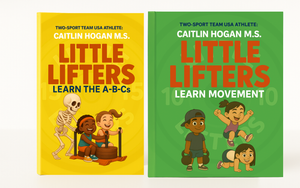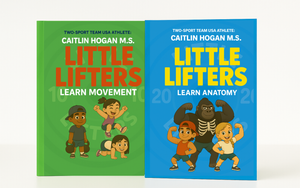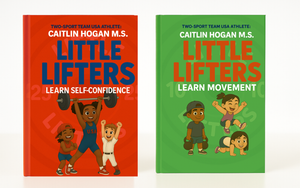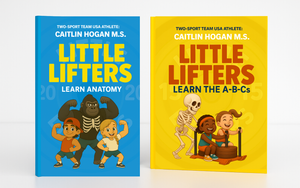🧗 Climb, Grip, Grow: Why Kids Need to Climb More
Climbing isn’t just a fun way for kids to explore their world—it’s one of the most effective full-body movements for developing strength, coordination, and confidence.
Whether your child is scaling a tree, pulling themselves up a ladder, or navigating a rock wall at the park, climbing builds the brain and body together in ways few other movements can.
It demands problem-solving, muscle coordination, and focus—all wrapped in a naturally motivating challenge.
🧠 Why It Matters
Climbing supports:
-
Bilateral coordination – using both arms and legs in harmony
-
Trunk and upper-body strength – especially shoulders, grip, and core
-
Endurance and full-body control – essential for sustained effort
-
Brain-body connection – integrating sensory systems for smooth, focused movement
It also helps with spatial awareness, planning, and risk assessment, all important for growing confidence and movement intelligence.
🧒 Movement by Age Group
▶️ Ages 2–4:
Activity: “Step & Climb”
-
Climb onto soft furniture (like couch cushions), park benches, or toddler climbers.
-
Use hands and feet to get up and down safely.
Activity: “Animal Climb”
-
Pretend to climb like bears, cats, or monkeys. Add animal noises to spark imagination!
Goal: Build comfort with uneven surfaces and basic body control.
▶️ Ages 5–7:
Activity: “Park Explorer Challenge”
-
Head to a playground or safe rock wall. Create a climbing “mission” like touching all the top bars or making it across a low climbing structure without touching the ground.
Activity: “Climb + Crawl Circuit”
-
Mix climbing with crawling under or over obstacles—chairs, ropes, low branches.
Goal: Improve coordination, strength, and focus through playful movement.
▶️ Ages 8–10:
Activity: “Climb & Navigate”
-
Encourage kids to find different ways up and down the same object (tree, boulder, ladder).
-
Add time or balance challenges if safe.
Activity: “Grip & Hang”
-
Practice holding onto a bar or branch while feet are off the ground—builds grip strength and shoulder stability for future climbing skills.
Goal: Build endurance, dynamic strength, and problem-solving during movement.
🔬 Science Spotlight
Climbing activates multiple muscle groups (core, back, grip, legs) and stimulates the vestibular system (balance), proprioception (body awareness), and bilateral integration (right/left brain communication).
This improves motor planning, focus, and physical literacy—skills that transfer to every sport, game, and real-life movement.
💡 Parent Tip:
Let your child take the lead. Instead of showing them how to climb, give them safe boundaries and let them problem-solve. Celebrate effort, not just success. That’s where the real growth happens.




0 comments